This article was co-authored by Rachel Cho. Rachel Cho is a Floral Designer, Plant Specialist, and the Owner of Rachel Cho Floral Design, a floral shop based in New York City. With more than 16 years of experience, she specializes in original and impactful floral design and is known for her dexterity, innate artistry, and design sense. Rachel’s work has been featured in numerous national media outlets such as The New York Times, Harper’s Bazaar, and Huffington Post Weddings.
This article has been viewed 34,025 times.
Cut white roses can be dyed various colors to create a neat fringed ruffle effect—and it's a cool experiment for you and the kids. They will enjoy watching as your roses turn color(s), and you can talk about the cohesive forces that hold water molecules together, transpiration, concentration gradients, phloem, xylem, and many other scientific aspects of the phenomenon.
Steps
-
1Gather the white roses, food coloring, and container. Fresher roses work best, and they do not even have to be fully opened. Just don't get super tight buds that feel compact and solid when you gently squeeze them. If you choose closed buds, try to pick ones that you judge will open soon.
-
2Measure approximately 30-60 mL (1-2 fl.oz.) of water - enough to fill your container at least 10 cm (3") deep.Advertisement
-
3Add 2-4 mL (⅓ to ⅔ tsp) of food coloring and let it disperse throughout the water until the color is nearly uniform. You can use this opportunity to talk with your children about thermal motion and thermal transport mechanisms in fluids and gases. Let them guess what is going on and encourage them to think deeper. Hint: a driving force in the universe is entropy - the tendency to disorder, everything to be dispersed and anti-crystalline.
-
4Remove all leaves from the roses.
-
5Cut the rose stem(s) diagonally to expose as much fresh surface as possible. Cut enough off to end up with about 12 in. of stem left. Ask the kids why you chose to cut the stem that way instead of straight across. Clue them in that florists and flower arrangers use this same cutting profile to help the flowers take up water better and, thereby, help their arrangements stay fresher longer.[1]
- You can use this opportunity to explain the generalities of the healing or scabbing action whereby a plant seals its wounds to prevent infiltration of disease and pests and loss of food and water. Look up callus, cutin and suberin with the kids if you want to delve into pathogen protection schema of plants.
-
6Place the rose(s) in the colored water for up to a week. The water in the flower will continue to evaporate from the flower in a process called transpiration. As it does so, each water molecule moves to fill an adjacent lower pressure zone and pulls the nearby water molecules up the xylem (dead elongated cells that act like a bundle of drinking straws).
-
7Wait and watch as the rose edges become tinted by the food coloring more and more deeply. After a while, you will see that the edges of the flower will change to the color of the food coloring being used.[2]
-
8Enjoy your colored rose!
Expert Q&A
-
QuestionHow long does it take to dye white roses with food coloring?
 Rachel ChoRachel Cho is a Floral Designer, Plant Specialist, and the Owner of Rachel Cho Floral Design, a floral shop based in New York City. With more than 16 years of experience, she specializes in original and impactful floral design and is known for her dexterity, innate artistry, and design sense. Rachel’s work has been featured in numerous national media outlets such as The New York Times, Harper’s Bazaar, and Huffington Post Weddings.
Rachel ChoRachel Cho is a Floral Designer, Plant Specialist, and the Owner of Rachel Cho Floral Design, a floral shop based in New York City. With more than 16 years of experience, she specializes in original and impactful floral design and is known for her dexterity, innate artistry, and design sense. Rachel’s work has been featured in numerous national media outlets such as The New York Times, Harper’s Bazaar, and Huffington Post Weddings.
Floral Designer & Plant Specialist While you can leave them on the dye for longer, a couple of hours should be enough to color them.
While you can leave them on the dye for longer, a couple of hours should be enough to color them. -
QuestionWhy are they speckled?
 NinoxTop AnswererBecause the water doesn't spread evenly in the petals. Some spots have more water than others, hence the speckled aspect.
NinoxTop AnswererBecause the water doesn't spread evenly in the petals. Some spots have more water than others, hence the speckled aspect. -
QuestionWhats the science behind this experiment?
 NinoxTop AnswererRoses absorb the water from the pot. Because of the food coloring, white cells become colored when they absorb colored water.
NinoxTop AnswererRoses absorb the water from the pot. Because of the food coloring, white cells become colored when they absorb colored water.
Warnings
- Be careful with the food dye—it may stain skin and surfaces.⧼thumbs_response⧽
Things You'll Need
- White roses
- A container—small diameter drinking glass, test tube and stand, graduated cylinder, or similar
- Food coloring
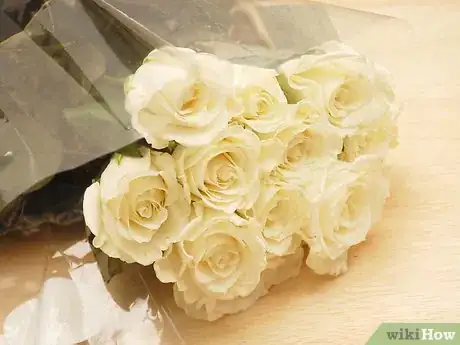

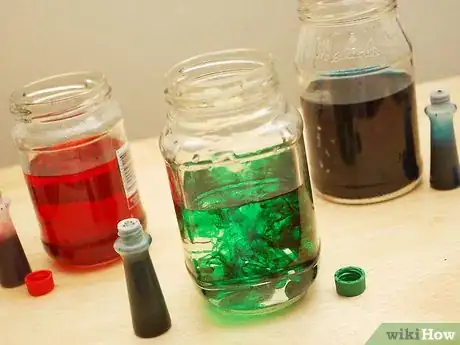

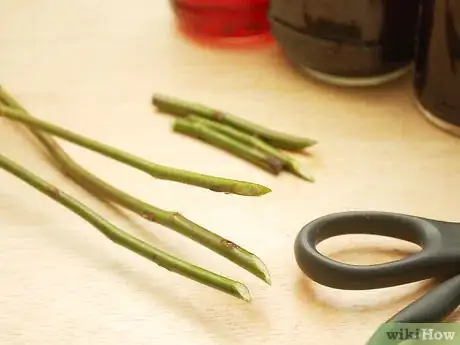
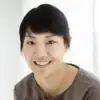
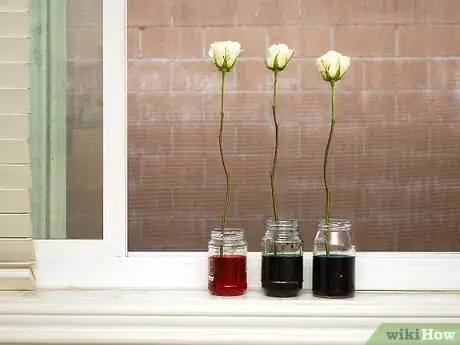
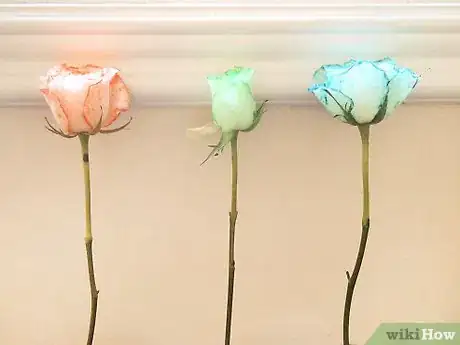
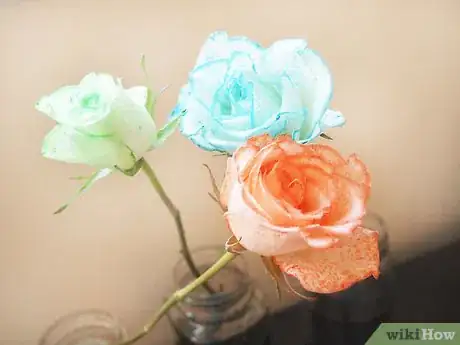
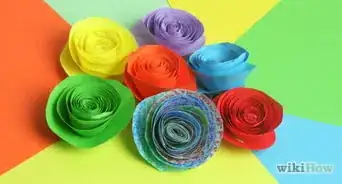
-Step-11.webp)

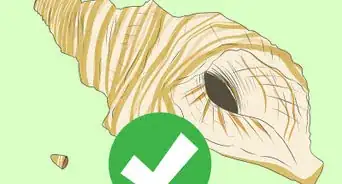
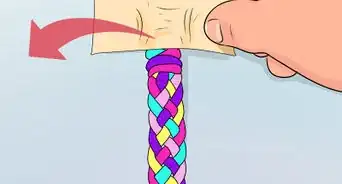
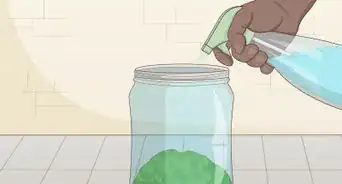







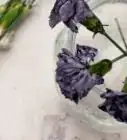
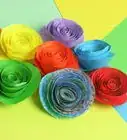

-Step-11.webp)


































